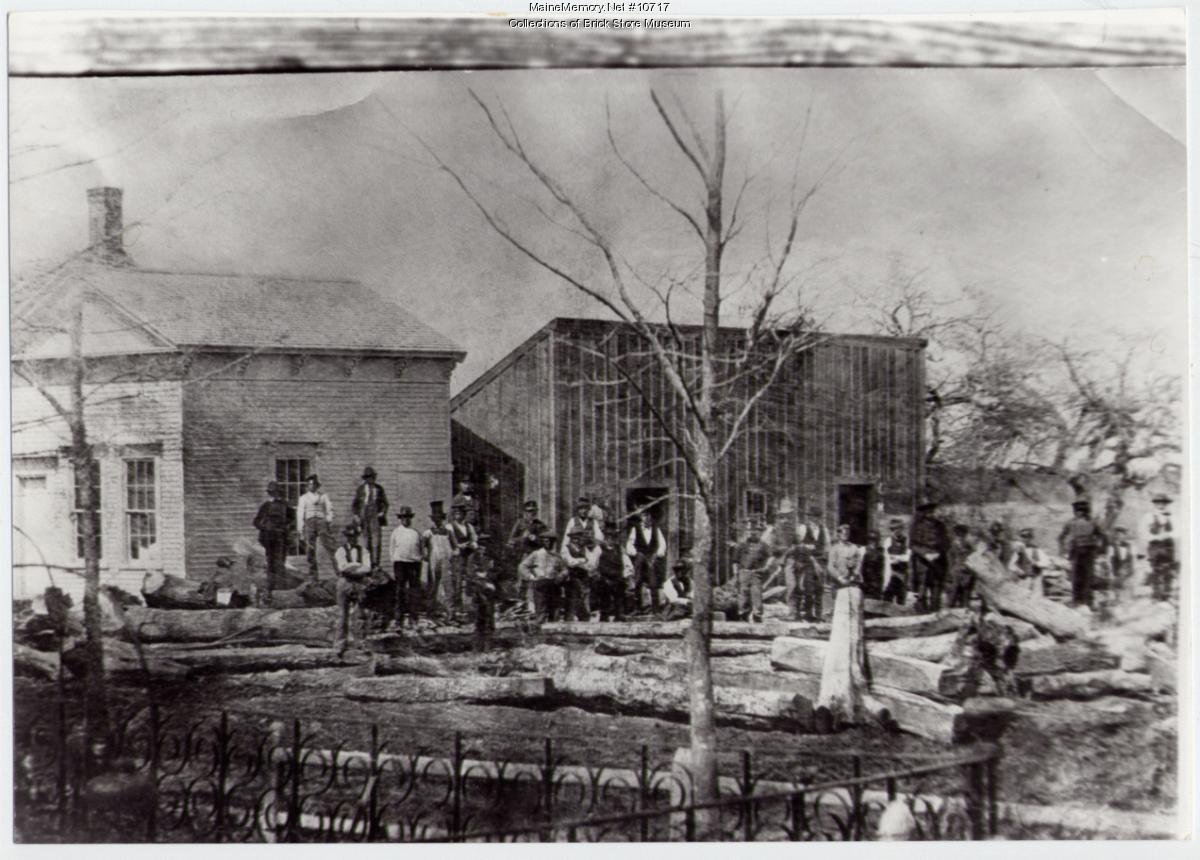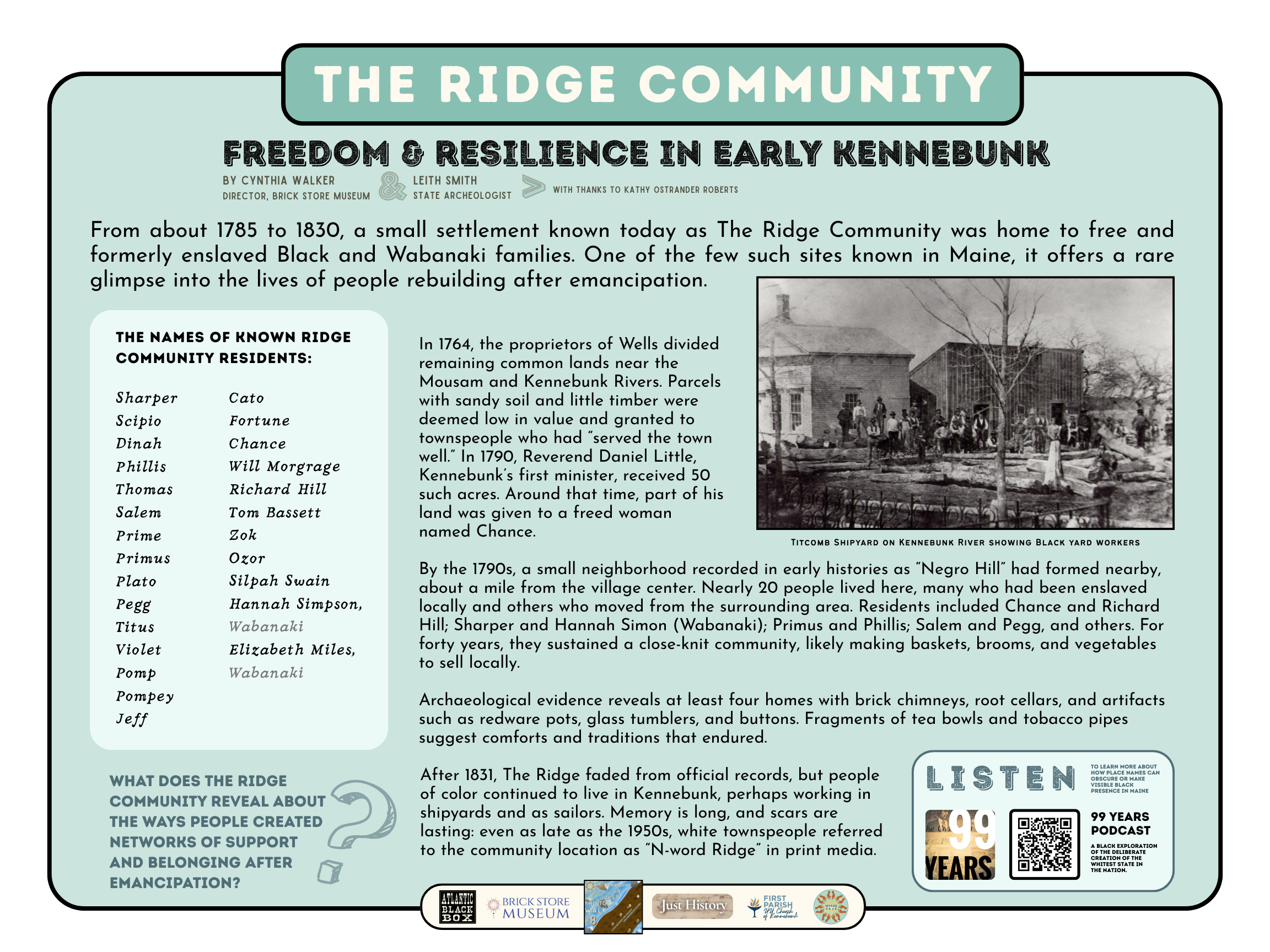The Ridge Community: Freedom & Resilience in Early Kennebunk
This research was compiled by Cynthia Walker and Leith Smith, with thanks to Kathy Ostrander Roberts
Titcomb shipyard, Kennebunk Landing, ca. 1855, image courtesy of The Brick Store Museum
From about 1785 to 1830, a small settlement known today as The Ridge Community was home to free and formerly enslaved Black and Wabanaki families. One of the few such sites known in Maine, it offers a rare glimpse into the lives of people rebuilding after emancipation.
In 1764, the proprietors of Wells divided remaining common lands near the Mousam and Kennebunk Rivers. Parcels with sandy soil and little timber were deemed low in value and granted to townspeople who had “served the town well.” In 1790, Reverend Daniel Little, Kennebunk’s first minister, received 50 such acres. Around that time, part of his land was given to a freed woman named Chance.
By the 1790s, a small neighborhood recorded in early histories as “Negro Hill” had formed nearby, about a mile from the village center. Nearly 20 people lived here, many who had been enslaved locally and others who moved from the surrounding area. Residents included Chance and Richard Hill; Sharper and Hannah Simon (Wabanaki); Primus and Phillis; Salem and Pegg, and others. For forty years, they sustained a close-knit community, likely making baskets, brooms, and vegetables to sell locally.
Archaeological evidence reveals at least four homes with brick chimneys, root cellars, and artifacts such as redware pots, glass tumblers, and buttons. Fragments of tea bowls and tobacco pipes suggest comforts and traditions that endured.
After 1831, The Ridge faded from official records, but people of color continued to live in Kennebunk, perhaps working in shipyards and as sailors. Memory is long, and scars are lasting: even as late as the 1950s, white townspeople referred to the community location as “N-word Ridge” in print media.
Names of known Ridge Community residents
Cato
Chance
Dinah
Elizabeth Miles, Wabanaki
Fortune
Hannah Simpson, Wabanaki
Jeff
Ozor
Pegg
Phillis
Plato
Pomp
Pompey
Prime
Primus
Richard Hill
Salem
Scipio
Sharper
Silpah Swain
Thomas
Titus
Tom Bassett
Violet
Will Morgrage
Zok
Reflection Questions
What does the Ridge Community reveal about the ways people created networks of support and belonging after emancipation?
Further Resources
99 Years Podcast - Listen to learn more about how place names can obscure or make visible Black presence in Maine
This research was compiled as part of the Just History Walk: Lives Between Two Rivers which took place on November 8, 2025. For more information about this walk, click here. For more research related to this area, click on the tags below. To download a hi-res version of the poster below for educational use, please contact where@atlanticblackbox.com.
Poster design by Meadow Dibbles

